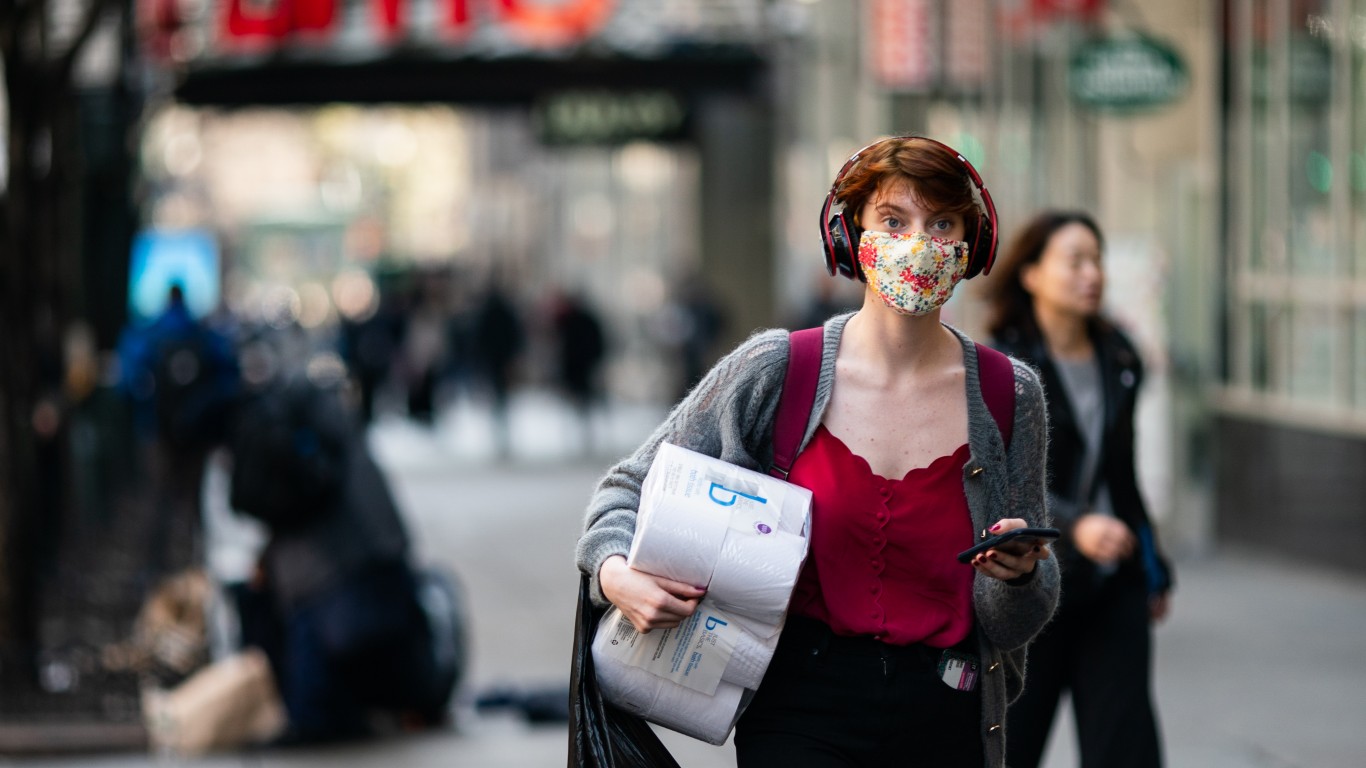Economy
Personal Income, Consumer Spending and Personal Savings Rates Look Schizophrenic in the Recession

Published:

Despite a massive recovery in the stock market and despite trillions of dollars of stimulus and support for the economy, there is no doubt that there now is a deep recession. While the swiftness from the COVID-19 pandemic is the cause, the hope is that this also will spur a recovery in record time. Government statistics often look haywire or get out of whack, but there are certain moments when batched economic reports almost look like mass schizophrenia has arrived.
Friday’s economic reporting cycle was definitely a day when craziness definitely comes to mind. Before getting too deep into these numbers, note that it is important to keep in mind that economic data often look skewed one way or another in the first weeks and months of a crisis or recession. The same is true as the recovery begins, when some of the growth metrics look very exaggerated due to how negative some of the prior referenced data was.
The U.S. Department of Commerce released the latest readings on personal income, personal spending and the personal savings rate on Friday. The report is for April, and this was the first full month in which nearly every person was in the same situation. This is the main reason these numbers will look so abnormal.
Personal income increased by $1.97 trillion in April, for a gain of 10.5%. Disposable personal income increased even higher to $2.13 trillion, for a 12.9% gain. The Commerce Department also reported that personal consumption expenditures (spending) fell by $1.89 trillion, for a loss of 13.6% last month. This was the steepest decline dating back to 1959.
Econoday’s consensus estimates were that personal income would fall by 6.0% and that spending would be down by 12.6%.
The initial government estimates on real rates of disposable income and real spending were exaggerated even more. Real disposable personal income rose by 13.4% in April, while real personal spending decreased by 13.2%. The pricing index on personal consumption (spending) decreased by 0.5% in April, and that figure showed a decrease of 0.4% excluding food and energy.
Friday’s report did specify that the reason there was an increase in personal income in April despite the obvious impact of a recession, was primarily because of the increase in social benefits payments (those $1,200 checks) by the government to people from the federal economic recovery programs that were in place due to the COVID-19 pandemic. A deeper look also showed that unemployment insurance payments rose sharply, but wages and salaries were down by 8%. In short, those gains are highly subjective and not representative of the private sector economy.
The report also specified that the $1.66 trillion decrease in real personal spending reflected a $758.3 billion decrease in goods and a $943.3 billion decrease in services. Spending on food and beverages led the decline in goods, but all subcomponents showed a decrease. In services, the decline was led by lower spending on health care, food services and accommodations.
In one aspect of this report for April things really went haywire. The Commerce Department reported that personal saving was $6.15 trillion in April. The personal saving rate, which is savings as a percentage of disposable personal income, was an unprecedented 33% in April.
The government’s definition of personal income is what individuals receive from wages and salaries, Social Security payments, other government benefits, dividends and interest payments, business ownership, and also from other sources.
Another issue to consider is that the Commerce Department’s report had a boxed note on the COVID-19 impact, indicating that April’s report for personal income and personal spending was affected by the response to the spread of COVID-19. The report also warned that federal economic recovery payments played a role, as did the continued stay-at-home orders. The report even specified:
The full economic effects of the COVID-19 pandemic cannot be quantified in the personal income and outlays estimate for April because the impacts are generally embedded in source data and cannot be separately identified.
Government economic reports often look skewed, and this was one of those reports in which the data were more than surprising. The expectations were of course that the spending would be lower. That happens in recessions. The major jump in personal income that led to an increase in the savings rate is very far out of bounds.
Perhaps the good news within this bad news is that consumers have kept their money to get through a bumpy period ahead. May that period be as short as the stock market is hoping it will be. With the economy opening back up, there is also more opportunity for spending that will either increase the numbers or at least will prevent a further slide as the recession carries on.
Thank you for reading! Have some feedback for us?
Contact the 24/7 Wall St. editorial team.